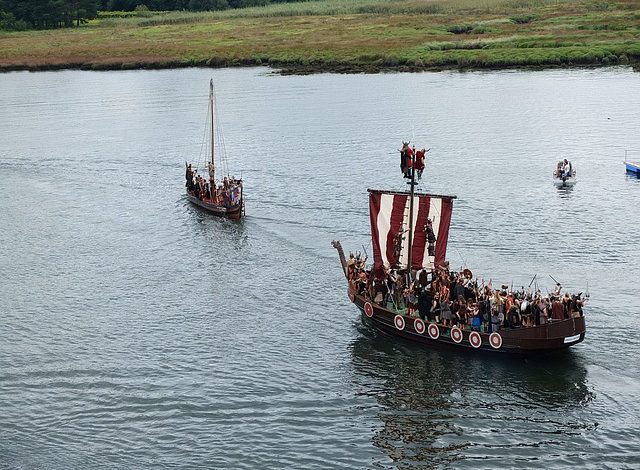Vikings were the first Europeans to set foot in America, precisely 1,000 years ago before Columbus

Exactly 1,000 years ago, in 1021, Vikings from Greenland were already the first Europeans present in North America, long before Columbus in 1492. New archaeological research from the Dutch University of Groningen, published in Nature, has now been able to determine that date very precisely.
The Vikings were almost 500 years ahead of the explorer Christopher Columbus from Genoa, who reached the Bahamas in 1492 and set foot on the American continent under the Spanish flag.
That they were first was already evident in legends about the Vikings’ crossing from Greenland to North America. Remains of a Viking settlement had also been found in Newfoundland, Canada. But the exact date of their presence remained unclear. For example, those oral stories had not been written down until the thirteenth century, at least 200 years after the events they recounted.
Using a new dating method, researchers at the University of Groningen have now succeeded in determining that the Vikings were in North America, also known as the New World, at least in 1021. That is exactly 1,000 years ago.
The archaeologists examined pieces of wood with notches in them that were made with metal tools, which were not made by the indigenous people. The Vikings, for their part, did use metal tools back then.
Moreover, scientists have known for some time that Vikings had a settlement at the archaeological site of L’Anse aux Meadows in Canadian Newfoundland, the same place where the pieces of wood were found. The Viking village numbered about a hundred men and women. They cut down trees to build their settlement and repair their ships. At least three of those trees were cut down in the year 1021, the new study shows.
The dating method used is that of dendrochronology, based on counting growth rings of trees, combined with the carbon method. The reference point was the year 992 when a major solar eruption was known to have taken place. This caused a spike in the carbon-14 concentration, a radioactive carbon variant that can be found in wood from that time, among other things. This also appeared to be the case with some of the pieces of wood examined. It was then a matter of counting tree rings to arrive at the year 1021.

The first Norwegian settlers in Greenland were from Iceland and Scandinavia. The arrival of the explorers in Newfoundland meant that for the first time, mankind had circumnavigated the globe. One hundred thousand years earlier, modern man had departed from Africa. Through Asia and the Bering Strait, some had reached America. Their descendants in 1021 probably encountered the descendants of those who had then sailed through Europe to the New World.
The stay of the Normans in Newfoundland did not last long. The research shows that they lived at L’Anse aux Meadows for three to thirteen years and then returned to Greenland.




